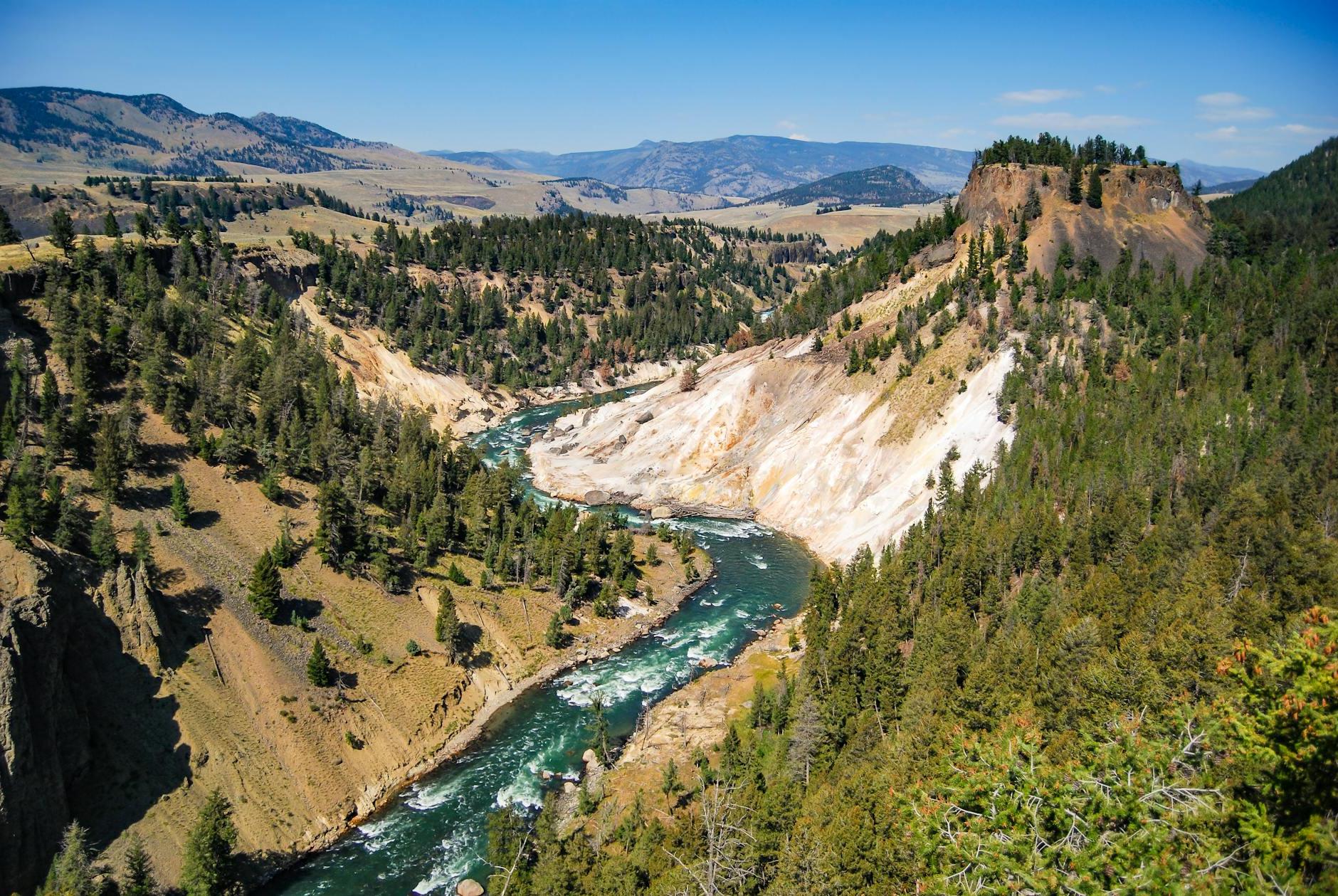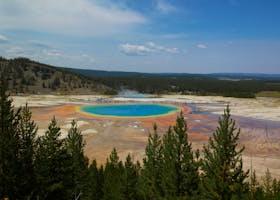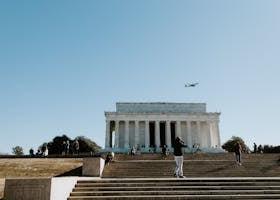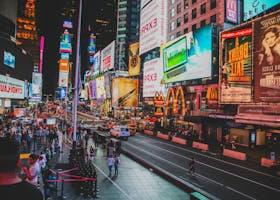10 Must-See Wonders in Yellowstone National Park
Posted on June 4, 2024 • 9 minutes • 1864 words
Table of contents
- 10 best things to see in Yellowstone National Park
-
Frequently Asked Questions
- 1. What is the best time of the year to visit Yellowstone National Park?
- 2. Should I rent a car in Yellowstone National Park?
- 3. What are different ways to get to Yellowstone National Park?
- 4. Are there things to do with children in Yellowstone National Park?
- 5. Is Yellowstone National Park safe to travel to?
Welcome to Yellowstone National Park, a land of extraordinary beauty and natural wonders! Nestled in the western United States, this iconic park is a treasure trove of sights that will leave you breathless. While summer is the most popular time to visit, attracting adventurers from all over the world with its warm weather and vibrant landscapes, Yellowstone has something magical to offer all year round. Whether you’re here for the vibrant colors of autumn, the snowy serenity of winter, or the blooming brilliance of spring, you’re in for a treat. Join us as we explore the 10 must-see wonders in Yellowstone that you won’t want to miss!
10 best things to see in Yellowstone National Park
10. Yellowstone Lake
Yellowstone Lake is a must-visit when you’re exploring Yellowstone National Park. It’s the largest high-elevation lake in North America, offering stunning views and a peaceful atmosphere. To get there, you can drive along the Grand Loop Road, which circles the park and provides easy access to the lake. Keep an eye out for the West Thumb section of the lake, where you’ll find incredible geothermal features right by the water. Make sure to bring your camera, as the sunsets here are breathtaking. Always stay on marked trails and be aware of wildlife, as the park is home to various animals like bears and bison. Enjoy the natural beauty and the serenity of this remarkable spot!
9. Mammoth Hot Springs
Visiting Mammoth Hot Springs in Yellowstone National Park is a must! The stunning terraces of travertine rock formed by hot water bubbling up from deep underground are truly a natural marvel. To get there, head to the north entrance of the park near Gardiner, Montana. From there, it’s a short drive following the signs to Mammoth Hot Springs. Stay observant as you explore; the hot springs can be very hot, so always stick to the boardwalks for safety. Also, keep an eye out for wildlife like elk, which are often seen grazing nearby. This unique geothermal area is unlike anything else in the park, making it a highlight of any visit to Yellowstone.
8. Tower Fall
When you visit Yellowstone National Park, don’t miss Tower Fall. This magnificent waterfall plunges 132 feet and offers stunning views that are perfect for photographs. To get there, drive about 3 miles south from the Tower Junction. You’ll find a parking area near the trailhead. From there, it’s a short walk along a well-marked path to the viewing area. Make sure to wear sturdy shoes, as the path can be a bit uneven. Keep an eye out for wildlife; you might spot bison or elk along the way. Also, remember to stay on designated trails to protect the natural surroundings. Enjoy the breathtaking sight and the soothing sounds of the waterfall!
7. Hayden Valley
When you’re at Yellowstone National Park, make sure to visit Hayden Valley. This beautiful area is one of the best spots to see wildlife like bison, elk, and even grizzly bears. To get there, take the Grand Loop Road; Hayden Valley is located between Yellowstone Lake and the Grand Canyon of the Yellowstone. Keep an eye out for animals crossing the road, especially early in the morning or late in the evening when they are most active. Bring binoculars for a closer look and a camera to capture the stunning landscape and wildlife. It’s a perfect way to experience the natural beauty and excitement of Yellowstone!
6. Norris Geyser Basin
Visiting Norris Geyser Basin in Yellowstone National Park is a must for any nature lover. It’s one of the hottest and most dynamic thermal areas in the park, featuring colorful hot springs, hissing fumaroles, and fascinating geysers. To get there, drive about 21 miles south of Mammoth Hot Springs or 28 miles west of Canyon Village. Once you arrive, make sure to walk the boardwalk trails to see highlights like Steamboat Geyser, the world’s tallest active geyser. Don’t forget comfortable walking shoes, a hat, and water. Always stay on the boardwalks to protect both yourself and the delicate environment.
5. Artist Point
Visiting Artist Point at Yellowstone National Park is a must for its breathtaking views of the Grand Canyon of the Yellowstone River. The colorful canyon walls and the stunning Lower Falls create a perfect backdrop for memorable photos. To get there, drive to the South Rim Drive and follow the signs to Artist Point. The short walk from the parking area to the viewpoint is easy and suitable for most visitors. While there, take note of the weather as sudden changes can occur. Also, keep a safe distance from the edge and respect wildlife in the area. Enjoy the stunning panorama that has inspired countless artists and photographers!
4. Firehole River
When visiting Yellowstone National Park, you should definitely make a stop at the Firehole River. This beautiful river offers stunning views, warm water for swimming, and great fishing spots. To get there, drive along the park’s main roads until you reach Firehole Canyon Drive, a short, one-way loop that takes you right to the heart of the river. Keep your eyes open for wildlife, as animals like bison and elk are often nearby. Also, remember that swimming is only allowed in designated areas, so always follow the signs to stay safe. Enjoy the natural beauty and peaceful atmosphere at this must-see spot in Yellowstone!
3. Lamar Valley
Visiting Lamar Valley while at Yellowstone National Park is a must for nature lovers and wildlife enthusiasts. Known as “America’s Serengeti,” Lamar Valley boasts stunning landscapes and an impressive array of animals like bison, elk, and wolves. To get there, head east from Mammoth Hot Springs on the Grand Loop Road, then continue towards the Northeast Entrance. The best times to visit are early morning or late evening when wildlife is most active. Don’t forget your binoculars for a closer look and always respect the animals by keeping a safe distance. Whether you’re a seasoned photographer or just love the great outdoors, Lamar Valley is an unforgettable experience.
2. Grand Prismatic Spring
When visiting Yellowstone National Park, the Grand Prismatic Spring is a must-see. This natural wonder is the largest hot spring in the United States and one of the most stunning, with vibrant colors ranging from deep blue to bright orange. To get there, head to the Midway Geyser Basin, located approximately halfway between the Old Faithful area and the park’s West Entrance. There are two main ways to see it: the boardwalk that takes you close to the spring and the Grand Prismatic Overlook Trail, which offers an aerial view. Be prepared for crowds, especially during peak hours, and stay on marked paths to protect both yourself and the delicate environment.
1. Old Faithful
Visiting Old Faithful in Yellowstone National Park is a must-see experience you shouldn’t miss. This famous geyser erupts every 60 to 110 minutes, shooting hot water up to 180 feet into the air. Getting to Old Faithful is easy; head toward the Upper Geyser Basin, which is well-signposted along park roads. Once there, you can watch the regular eruptions from the safely designated viewing areas. Keep an eye on the eruption schedule posted by the park rangers, so you don’t miss the next show. Additionally, remember to stay on the boardwalks to protect the fragile geothermal features and ensure your safety. Make sure to bring your camera—the sight is truly remarkable!
Frequently Asked Questions
1. What is the best time of the year to visit Yellowstone National Park?
The best time of the year to visit Yellowstone National Park is from late April to early June or from September to early October. During these months, the weather is pleasant, the crowds are lighter, and you can witness beautiful spring blooms or stunning fall colors. Wildlife is also more active, making it a great time for animal sightings. If you prefer a quieter and more budget-friendly trip, consider visiting during the winter months, from November to March. While some facilities may be closed and certain areas inaccessible due to snow, you can enjoy a unique, serene experience with winter activities like snowshoeing and snowmobiling. Visiting Yellowstone outside the peak summer season can also mean lower accommodation and entrance fees.
2. Should I rent a car in Yellowstone National Park?
If you’re planning a trip to Yellowstone National Park, renting a car can be a great idea. The park is huge, with over 300 miles of roads winding through diverse landscapes. Having a car gives you the freedom to explore at your own pace and reach remote spots that might be harder to get to otherwise. During peak season, traffic can get a bit heavy, especially near popular attractions, but it’s usually manageable. Parking is generally available at major sights, although it can fill up quickly during busy times. Public transport within the park is limited, and there aren’t many taxis, so a car can offer the most convenience.
3. What are different ways to get to Yellowstone National Park?
There are several ways to get to Yellowstone National Park. If you’re flying, the closest airports are Yellowstone Regional Airport in Cody, Wyoming, and Jackson Hole Airport in Jackson, Wyoming. From these airports, you can rent a car or take a shuttle bus to the park. For those using public transport, you can take a bus to nearby towns such as Cody or Jackson and then catch a shuttle to the park. There aren’t direct train services, but you can take the Amtrak to Salt Lake City and then transfer to a bus. If you prefer driving, major Wyoming cities like Cheyenne and Casper offer scenic routes to the park. From Cheyenne, take I-25 North to Casper, then head west on US-26 to Moran, and finally, take US-191 North to the park’s south entrance. From Casper, you can follow US-20 to Thermopolis, then WY-120 to Cody, and drive along the stunning Buffalo Bill Cody Scenic Byway.
4. Are there things to do with children in Yellowstone National Park?
Absolutely, there are plenty of things to do with children in Yellowstone National Park. Kids will love exploring the park’s many geysers, especially the famous Old Faithful which erupts like clockwork. The Yellowstone Junior Ranger Program is a big hit too; it lets kids earn a badge by completing fun activities and learning about the park. There are easy hiking trails like the Fairy Falls Trail that offer amazing waterfalls and wildlife sightings. Don’t miss the Yellowstone Lake for a family picnic, and keep an eye out for bison or elk roaming freely. With all these exciting activities, your children will have a memorable adventure!
5. Is Yellowstone National Park safe to travel to?
Yes, Yellowstone National Park is generally safe to travel to. The park has a good reputation for safety and security, making it a popular destination for tourists. While serious crimes are rare, it’s always wise to stay vigilant. Petty theft can happen, especially in crowded areas, so keep an eye on your belongings and don’t leave valuables in plain sight. As with any travel destination, be aware of your surroundings and follow basic safety tips to ensure a pleasant visit.




